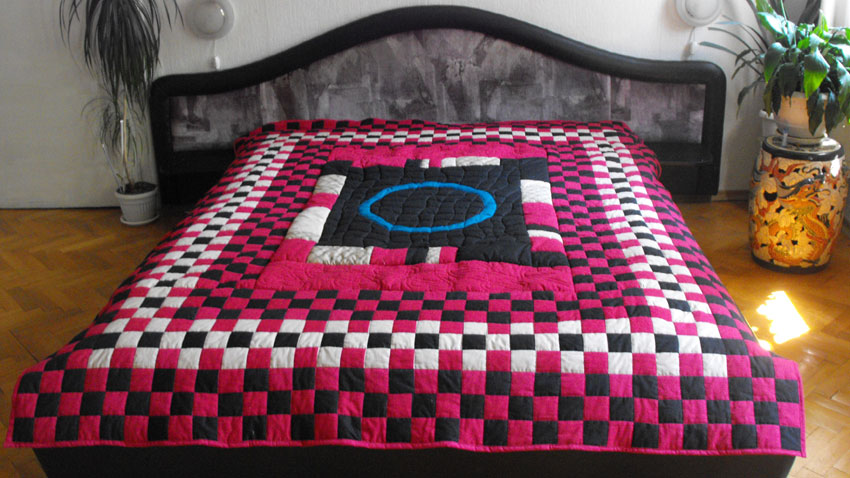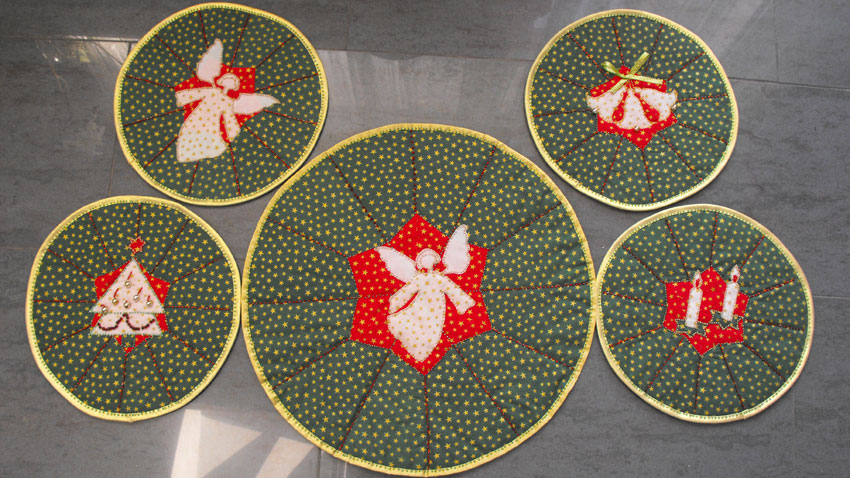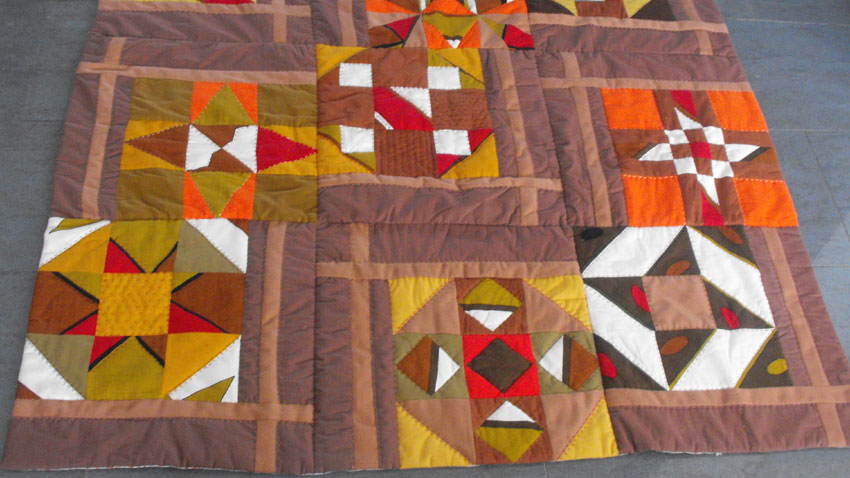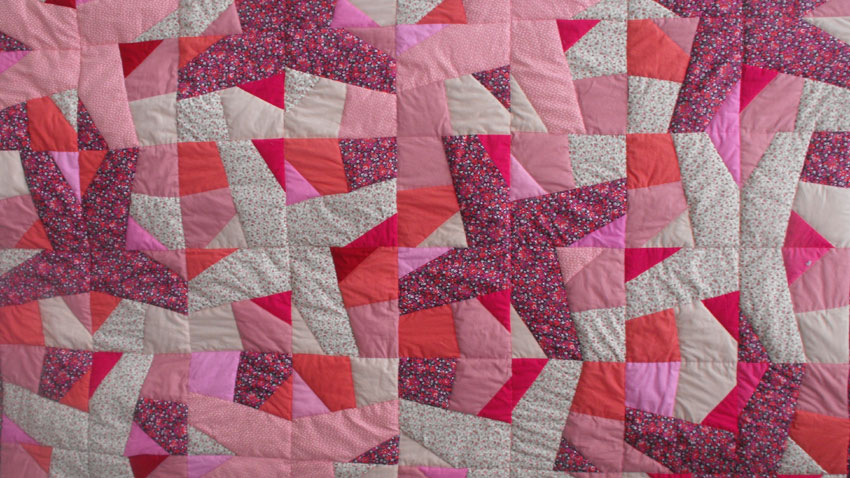Patchwork is considered to have emerged in 18th century England, but some of its different techniques might be much older and traced back to ancient times. The craft saw some decline after WWII, but its Renaissance occurred in the 1970s, when any folklore style was modern again. The applied art of patched bedspreads, blankets, pillow cases etc. started gaining popularity in Bulgaria towards the late 1980s. However, Kremena Kambova had already discovered patchwork and she has been giving her best for her pieces of artwork in the course of over 40 years!

“TV host Brigita Cholakova was the first person who discovered me back then – it was around 1986. She said on air: ‘Every woman who produces something with her hands, please feel free to take it to my show.’ That was when she told the audience about me and the then little unknown handicraft, while a few years later she did the same on the pages of her first magazine.”
Kremena Kambova has taught herself everything she knows. When years later she saw on the Internet real patchwork she was very surprised, as obviously her natural feeling for beauty and art had resulted in similar patterns years ago. She wouldn’t deny the modern stuff (applications, beads, lace and even metal) and even uses such techniques, but classical patchwork has remained her big love.

“Classical patchwork consists of the sewing together of the upper layer’s pieces, the placing of wadding in between and the joining with the third layer. The front side is the essential thing - this is the art of patchwork. It has to be beautiful, to show harmony, to be complete and organized. The classical style includes geometrical figures, which can be placed differently, depending on the author’s taste. One should know what she wants to do and what is most important – the pieces of cloth and colors should be properly selected. Everything is handmade with the classic patchwork and it takes a lot of time.”

“I do think that utilization is a major feature of patchwork, i.e. it has to be used in everyday life,” Kremena Kambova says. She is not a fan of modern patchwork, as the objects made this way – panes, pictures and posters, only bring in the feeling of aesthetics.
“Patchwork carries the spirit of the house, that of the person herself. Besides that, it shows the positive side of having such a hobby. Each person gets old, her socially active work stops, while ladies with that hobby have something to do with their hands, brain and senses. One has what to think about and this is magnificent,” says Bulgaria’s patchwork pioneer.

Kremena Kambova is a fan of textiles’ mixing, as the different materials provide greater softness and diversity. She uses cotton, flax and leotard in her work. She stays away from shiny textiles and thinks that balance is what’s important anywhere. Everything has to be carefully touched by the hands and the heart, as even the slightest inclination turns into kitsch, unpleasant for the eye. What about the creation process?
“The idea comes first. You think about something that you would like to create and picture it in your head. Then comes the rest: spinning, spilling, cutting, throwing… I tend to be more like a creative person, but have at the same time realized that patience is essential to make something good,” Kremena says.

Patchwork has been gaining its popularity in Bulgaria over the past years via Facebook groups, exhibitions and workshops – that is where the opinion and experience of Kremena are valued the most. At the same time people appreciate and use with pleasure the results of patchwork masters’ work. Whenever she gives her work to somebody, Kremena has only one requirement – the person to like it, to love it, to use and enjoy it and to throw it away after having been torn due to the long use…

English version: Zhivko Stanchev
Athens plans to modernise the Greek army by 2030 Greece's Defence Minister Nikos Dendias presented the plan for changes in the army to the parties in parliament. The reforms will cover all three branches of the military. By 2030, 33 units..
A short video kaleidoscope of the "untold stories" of worthy Bulgarians - scientists, entrepreneurs, engineers, artists - who have contributed to our country's good image in the eyes of the world opened an unconventional public forum that showcased the..
The film "Gundi: Legend of Love" caused a sensation across the Ocean. Screenings of the film story about the life of legendary football player Georgi Asparuhov – Gundi were held in Los Angeles and Las Vegas as the halls were full...
The Varna Regional Library "Pencho Slaveykov" has acquired a humanoid robot. It was unveiled by the library's director, Radka Kalcheva, during the..

+359 2 9336 661
